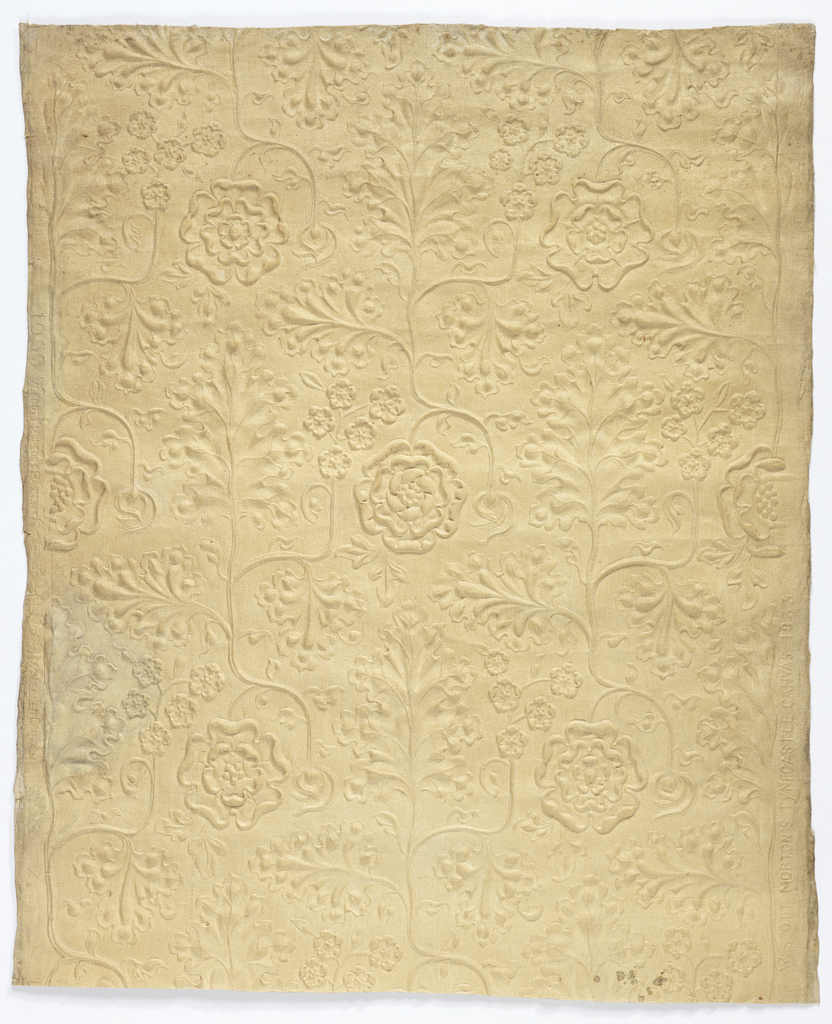This Tudor Rose pattern of Tynecastle Canvas is one of a very few textile wallcoverings in the Museum’s collection. Tudor Rose consists of a single repeating element, a foliage sprig with a dominant tudor rose along with several smaller flowers. This motif is tightly melded with its repeating cohorts so forms a nice all-over pattern, with no noticeable gaps or voids between motifs. With the way the plant form twists and bends the design is non-directional and would be appropriate for use on the wall as well as the ceiling.
Tynecastle Canvas is an embossed wallcovering made of linen canvas and paste patented by W. Scott Morton in 1882. Morton had been working as an architect and designer, and in the early 1870s established a partnership with his brother John called Morton & Co. By 1881 Scott Morton had stopped practicing architecture and went on a short study tour of Italy where he was inspired by embossed leather hangings. Upon his return to Scotland requests for leather decorations led Morton to develop the embossed canvas wallcoverings. John developed the method for the embossing, creating the rollers and molds, while Scott created the designs. With applications of paint, dye and gilding the embossed canvas could be made to resemble gilded leather, carved woodwork, or fancy plaster. Embossed canvas friezes were patented in 1885.
Demand for Tynecastle Canvas continued to grow throughout the 1880s and 1890s and included many specialty markets such as yachts and railroad cars. In 1893 Tynecastle Canvas was used on W.K. Vanderbilt’s new yacht, said to be the finest boat afloat with elegant appointments. New offices and showrooms opened to meet the growing demand and in 1889 a showroom opened In New York City to directly market Tynecastle Canvas in the United States.
